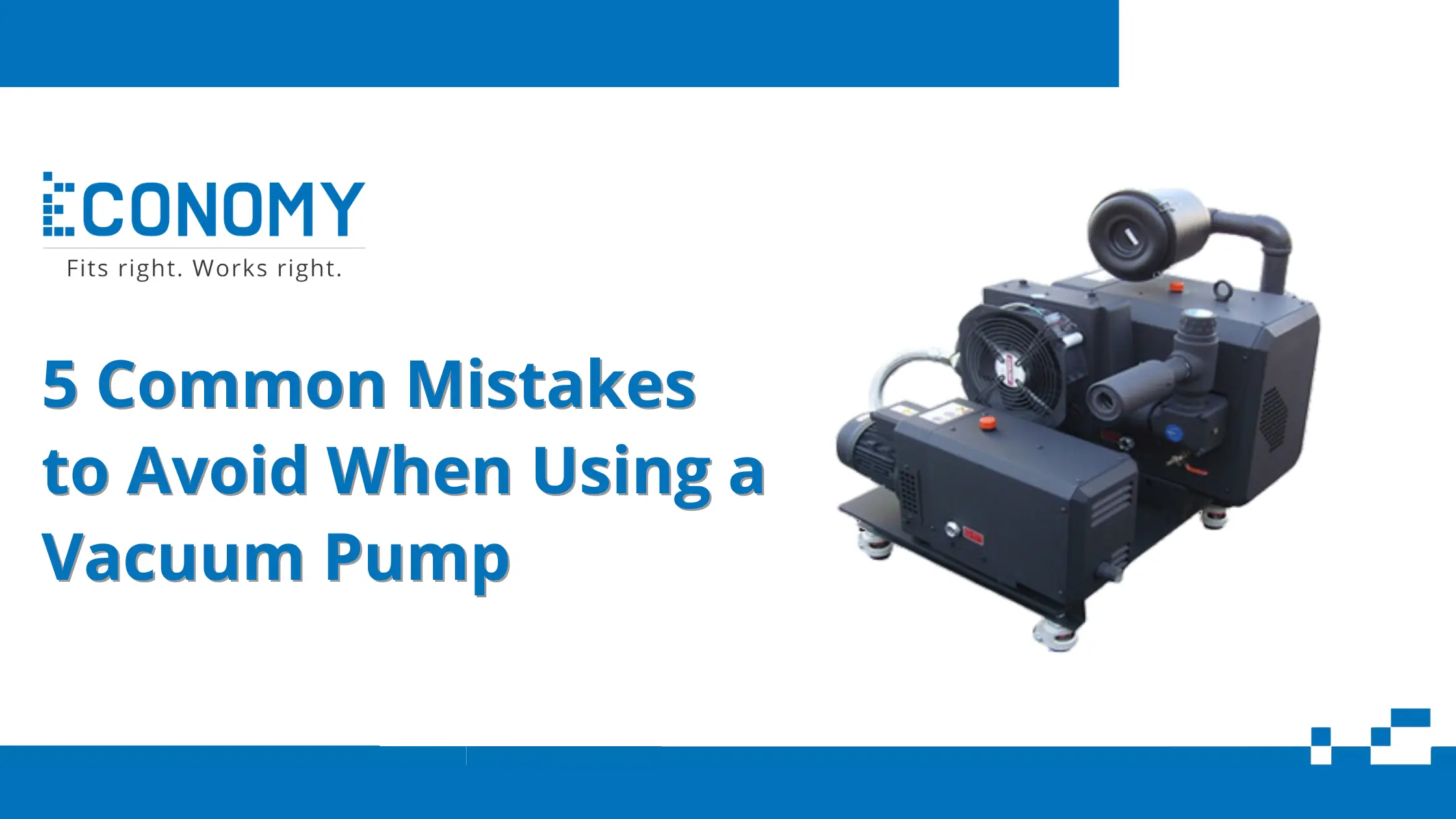Vacuum pumps play a crucial role in industrial processes, providing essential pressure and flow to remove air or gases from a system. However, like any mechanical equipment, vacuum pumps can experience failures. Identifying the signs of vacuum pump failure and understanding the causes can help prevent costly downtime. In this article, we will explore five signs and causes of vacuum pump failure, along with best practices, common mistakes, and proper installation techniques to keep vacuum pumps functioning efficiently.
Signs and Causes of Vacuum Pump Failure
- Loss of Vacuum Performance
- Sign: One of the most apparent signs of vacuum pump failure is a reduction in vacuum pressure. This loss of vacuum can significantly impact the process, leading to reduced performance and inefficiency in operations.
- Cause: A loss of vacuum performance may result from leaks in the system, contamination, or worn-out seals. Other potential causes include clogged filters or damaged pump internals that hinder the pump’s ability to create the desired vacuum levels.
- Increased Noise Levels
- Sign: A vacuum pump producing unusual or excessive noise during operation indicates that something is wrong. The noise may vary from grinding sounds to screeching or rattling.
- Cause: Increased noise can be caused by misaligned components, damaged bearings, or worn-out vanes. Contamination from debris and oil breakdown may also lead to noise, as these contaminants create friction within the pump.
- Excessive Oil Consumption or Leakage
- Sign: If the vacuum pump is consuming more oil than usual or there is visible leakage, it’s a strong indication of failure.
- Cause: Excessive oil consumption can result from worn seals or gaskets, which lead to oil leaks. In some cases, improper oil levels or using the wrong oil type for the pump can exacerbate this issue, causing the pump to overheat and wear out faster.
- Overheating
- Sign: Vacuum pumps running hotter than normal indicate underlying issues. Overheating can lead to complete pump failure if not addressed promptly.
- Cause: Overheating is commonly caused by a lack of adequate cooling, oil degradation, or improper maintenance of the pump’s cooling system. Clogged filters or excessive workloads can force the pump to operate beyond its capacity, generating more heat.
- Frequent Cycling or Stalling
- Sign: A vacuum pump that frequently starts and stops or struggles to maintain consistent operation is another sign of failure.
- Cause: Frequent cycling or stalling may result from control system malfunctions, electrical issues, or mechanical problems within the pump. Additionally, obstructions in the inlet or outlet can create operational inefficiencies, forcing the pump to cycle more frequently.
Vacuum Pump Best Practices
To avoid these common signs of vacuum pump failure, it’s essential to follow best practices. Regular maintenance should include inspecting seals, replacing worn components, and ensuring that the pump is properly lubricated with the correct oil grade. Monitoring the pump’s performance for abnormal noise or temperature increases will allow you to identify issues before they become critical. Implementing a scheduled preventive maintenance plan will help minimize downtime and extend the life of the pump.
Common Mistakes Using Vacuum Pumps
Even with regular maintenance, common mistakes in vacuum pump operation can lead to failure:
- Using the Wrong Oil: Not all vacuum pumps use the same oil. Using the incorrect oil type can result in inadequate lubrication, leading to excessive wear and overheating.
- Ignoring Small Leaks: Small vacuum leaks might seem insignificant, but they can rapidly escalate into larger problems that affect the pump’s performance and longevity.
- Skipping Filter Replacements: Filters should be regularly replaced to avoid contamination of the pump. Clogged filters cause the pump to work harder, increasing the likelihood of overheating or failure.
Installing Vacuum Pumps Correctly
Proper installation is critical for vacuum pump performance. Follow these guidelines to ensure correct installation:
- Choose the Right Location: Ensure the pump is install in a well-ventilated area to prevent overheating. The location should also allow for easy access to the pump for maintenance.
- Secure Mounting: The pump must be securely mount to prevent vibration and movement, which can damage internal components.
- Align the System Properly: Make sure all connecting lines are properly align to prevent unnecessary strain on the pump. Misalignment can lead to leaks and increased wear on parts.
- Electrical Connections: Verify that the pump is connect to a stable power source with the correct voltage to avoid electrical issues that may lead to frequent stalling or cycling.
- Check for Compatibility: Ensure the pump is compatible with the system’s operating conditions, such as pressure and temperature. Incorrect sizing or specification can lead to operational inefficiencies and premature failure.
Conclusion
Vacuum pump failure can be avoid by recognizing early signs such as loss of performance, excessive noise, oil leaks, overheating, and frequent cycling. Understanding the causes behind these failures—such as contamination, worn seals, and improper lubrication—is essential for preventive maintenance. Following best practices in operation, avoiding common mistakes, and ensuring proper installation can greatly enhance the longevity and performance of vacuum pumps, keeping your systems running smoothly and efficiently.

